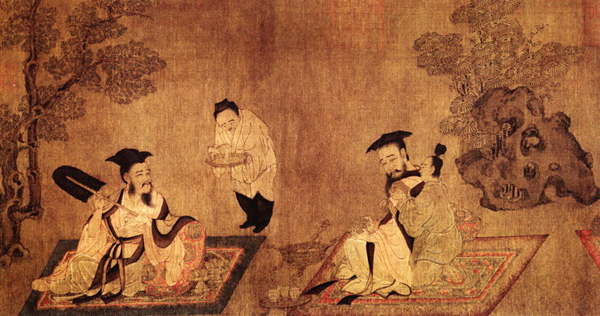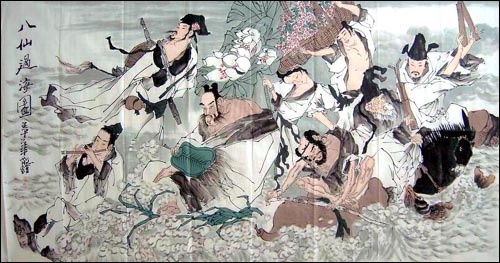Jin Dynasty: Taoism, Great Battles, Ceramics, and More

The Jin Dynasty lasted from 266-420 CE, culminating in the reunification of China proper. There were two main divisions for this dynasty: Western Jin and Eastern Jin.

Source: History’s Shadow
Hard-won battles
Western Jin fell into a succession crisis shortly after the reunification. The War of the Eight Princes happened during this era. While it may seem like the War of the Eight Princes was a continuous war where eight princes worked together to reach a goal, there were peaceful times sandwiched between intense periods of fighting. The princes were also never on the same side.
With each new prince that entered the struggle, the scope of the war expanded. It caused numerous tribal groups that had been heavily drafted into the military to exploit the chaos and seize power. The war devastated the heartlands in northern China, and introduced the era of the Wu Hu uprisings that ended Western Jin. Centuries of warfare between northern barbarian kingdoms and souther Chinese dynasties were the result of this war so the literal Chinese translation, Disorder of the Eight Kings, might be a more appropriate name for this war.
After the disorder and chaos of the Western Jin, the Eastern Jin managed to find stability for around a century despite the constant barrage of threats from the north. They were eventually taken over by general Liu Yen in 420 CE.
One of the greatest battles in Chinese history occurred during the Jin Dynasty: the Battle of Fei River in 384 CE. 5,000 elite troops battled and defeated 15,000 enemy forces.

Source: Alain R Truong
Taoism and other contributions
During this time, there was a polarization about Taoism as well. The Jin emperors both repressed and exploited Taoism. Successful merchants, small landowners, and other people of moderately comfortable financial status turned to Taoism teachings to seek solace, not to mention a number of major clans and military officers took up the faith.
Loyalty to the emperor was touted as a Taoist virtue, and it was taught that rebels could never be Taoist immortals. Popular Taoist religions and practices were accepted as long as the official schools of the course were supported, but the popular school like Tianshi Taoism were what the ordinary people practiced in secret.
Taoism also helped advance chemistry and medicine in China. The disunity and chaos caused a rise in popularity of Buddhism though, because of the practice’s focus on suffering. It is said that there were 1,768 Buddhist temples during the time of the Eastern Jin. Buddhism pushed philosophy and literature forward in the country.

Source: Metropolitan Museum of Art
The Jin Dynasty is well-known for the ceramic that came out of the era. Throughout its history, the dynasty produced celadon porcelain jars which are extremely valuable in today’s market. The people during this time greatly contributed to the success of porcelain-making and ceramic.
The story of The Butterfly Lovers, one of China’s Four Great Folktales, also came out of the Jin Dynasty. It is a tragic love story of a pair of lovers, and a monument to Liang Shanbo and Zhu Yingtai – the main characters, can be seen near the Tomba di Giulietta in Verona, Italy.
The reunification was the greatest highlight of this dynasty. With that and its contributions to the birth of new traditions and culture, the Jin dynasty, while relatively short, played a significant role in China’s rich and colorful past.
In case you missed it, you can also read about the Qin dynasty, Zhou dynasty, Shang dynasty, and the Xia dynasty, as well as what came before the first Chinese dynasty here.












